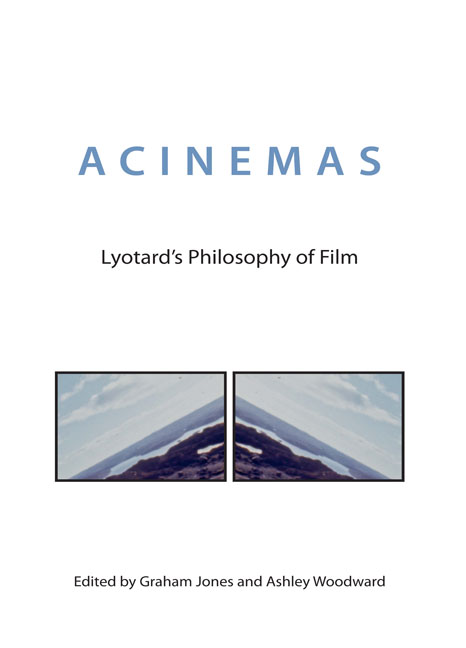Book contents
- Frontmatter
- Contents
- Acknowledgements
- Abbreviations
- Translators’ Note
- I Openings
- II Lyotard's Essays on Film
- III Approaches and Interpretations
- IV Applications and Extensions
- 11 Discourse, Figure, Suture: Lyotard and Cinematic Space
- 12 On Dialogue as Performative Art Criticism
- 13 Give Me a Sign: An Anxious Exploration of Performance on Film, Under Lyotard's Shadow
- 14 How Desire Works: A Lyotardian Lynch
- 15 Aberrant Movement and Somatography in the Hysterical Comedies of Roméo Bosetti
- Appendices
- Notes on Contributors
- Index
11 - Discourse, Figure, Suture: Lyotard and Cinematic Space
from IV - Applications and Extensions
Published online by Cambridge University Press: 23 June 2018
- Frontmatter
- Contents
- Acknowledgements
- Abbreviations
- Translators’ Note
- I Openings
- II Lyotard's Essays on Film
- III Approaches and Interpretations
- IV Applications and Extensions
- 11 Discourse, Figure, Suture: Lyotard and Cinematic Space
- 12 On Dialogue as Performative Art Criticism
- 13 Give Me a Sign: An Anxious Exploration of Performance on Film, Under Lyotard's Shadow
- 14 How Desire Works: A Lyotardian Lynch
- 15 Aberrant Movement and Somatography in the Hysterical Comedies of Roméo Bosetti
- Appendices
- Notes on Contributors
- Index
Summary
The focus of this chapter is on cinematic space – and how Lyotard's works on cinema and painting can illuminate this concept. First of all, I will discuss the way cinematic space was conceived at the turn of the 1970s in France (and thereafter in Anglophone journals such as Screen) in relation to film form and cinema as institution. This is the context in which Lyotard's early work explicitly on cinema, ‘Acinema’, was received in film studies. Subsequently, through a brief consideration of two films, I will consider the relevance of the figural to an analysis of cinematic space. These films are Inception (dir. Christopher Nolan, 2010) and The Metamorphosis of Mr Samsa (dir. Caroline Leaf, 1978).
My concern here is to show how some of Lyotard's writings served then as an intervention into various canonical debates about cinema and how others can serve now as a resource to figure cinematic space. The films analysed below depart from the types of cinema Lyotard himself wrote about: Inception is analogue cinema that utilises computer-generated imagery (CGI) to provide new experiences of space that we can frame in figural terms; The Metamorphosis of Mr Samsa is an independent animation whose perpetually shifting form spatialises the perpetual flux that Lyotard sees as one of the poles of what he calls ‘acinema’. These choices may seem rather more pop cultural than the works analysed by Lyotard in his writings, explicitly interested in ‘art’ – but it is hoped that their relevance will be apparent in what follows.
One thing that most film and painting have in common is representation of a three-dimensional space on a two-dimensional support. This similarity is a commonplace, but one promising avenue of an engagement with Lyotard's work in relation to cinema is to extend his analyses of space and depth in visual arts to that of cinema.
- Type
- Chapter
- Information
- AcinemasLyotard's Philosophy of Film, pp. 119 - 135Publisher: Edinburgh University PressPrint publication year: 2017



